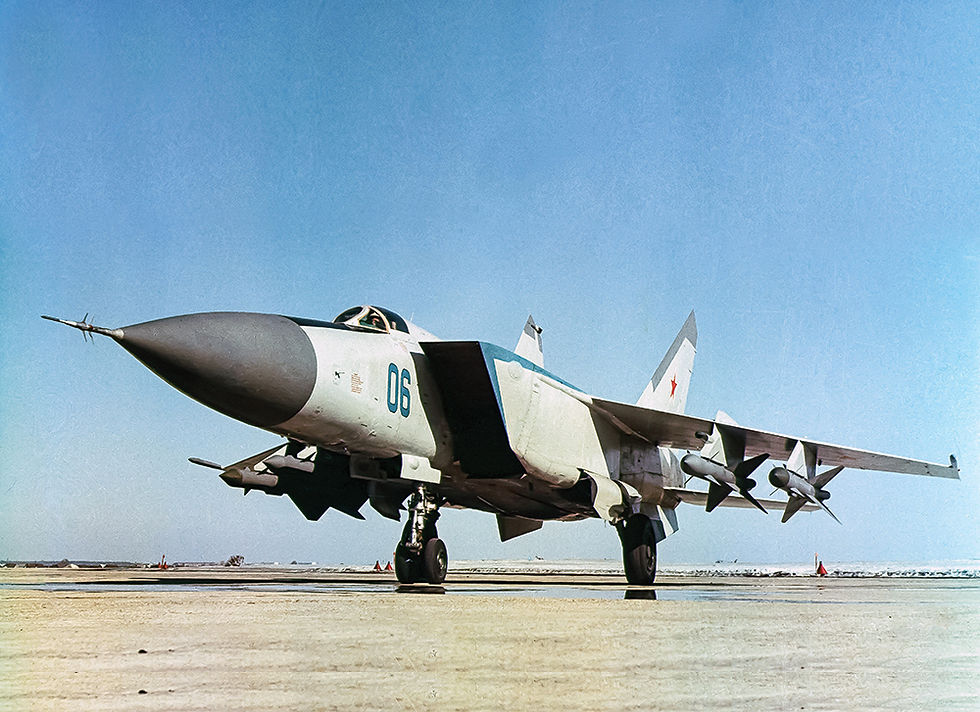The Kfir: A Daring Act of Espionage Takes Flight
- thiliwriting
- Mar 6, 2024
- 2 min read

The Kfir, a nimble and potent fighter jet, stands as a testament to Israeli ingenuity and a daring act of espionage. In the late 1960s, facing a growing threat from its Arab neighbors, Israel desperately needed to bolster its air force. However, acquiring advanced jet fighters from traditional Western powers proved difficult due to political sensitivities. This is where the Mossad, Israel's legendary intelligence agency, entered the scene, orchestrating a remarkable operation that would change the course of Israeli aviation.
The story begins with the Dassault Mirage III, a French-made supersonic fighter coveted by Israel. The Mirage boasted superior speed and maneuverability compared to Israel's existing aircraft. However, France, wary of escalating tensions in the Middle East, refused to sell the jets to Israel. Undeterred, the Mossad hatched a plan to acquire the necessary knowledge to build their own version of the Mirage.
Details remain shrouded in secrecy, but according to various accounts, Mossad agents managed to obtain a complete set of blueprints for the Mirage III. Some reports suggest they cultivated relationships with disgruntled French engineers, while others hint at a more audacious operation involving infiltration of a Dassault facility. Regardless of the method, the Mossad secured the crucial technical data.
With the blueprints in hand, Israel embarked on a clandestine project. Israeli engineers, working under the codename "Project Kfir" (meaning "lion cub"), meticulously analyzed the Mirage plans. However, simply copying the design wasn't an option. Israel lacked the industrial capacity to directly replicate the Mirage's complex systems.
This is where Israeli ingenuity truly shone. The engineers meticulously adapted the design, utilizing components and technologies readily available to Israel. They replaced the Mirage's powerful but fuel-guzzling engine with a less sophisticated but more reliable American alternative. They also modified the avionics and weaponry to suit Israeli needs and tactics.
The result of this clandestine effort was the Kfir. While not an exact replica of the Mirage, it captured the essence of the French design. Lighter and more agile than the original, the Kfir was specifically tailored for Israeli combat scenarios. It excelled in short-range dogfights, a crucial aspect of aerial warfare in the Middle East.
The Kfir's first flight in 1973 proved to be a turning point. Just months later, the Yom Kippur War erupted, pitting Israel against a combined Arab force. The Kfir, a closely guarded secret until then, took to the skies in its baptism by fire. The new jet proved to be a revelation. Its maneuverability and agility surprised Arab pilots accustomed to facing older Israeli aircraft.
The Kfir played a pivotal role in Israel's victory in the Yom Kippur War. It scored numerous aerial victories, helping to establish air superiority for Israel. The success of the Kfir program not only bolstered Israel's defenses but also solidified its reputation for innovation and resourcefulness in the face of adversity.
The story of the Kfir is a fascinating blend of audacious espionage, meticulous engineering, and unwavering determination. It stands as a reminder that sometimes, the greatest leaps forward are achieved not through brute force, but through ingenuity and a touch of daring. The Kfir, born from the shadows of espionage, soared into the skies as a symbol of Israeli resilience and technological prowess.



Comentarios